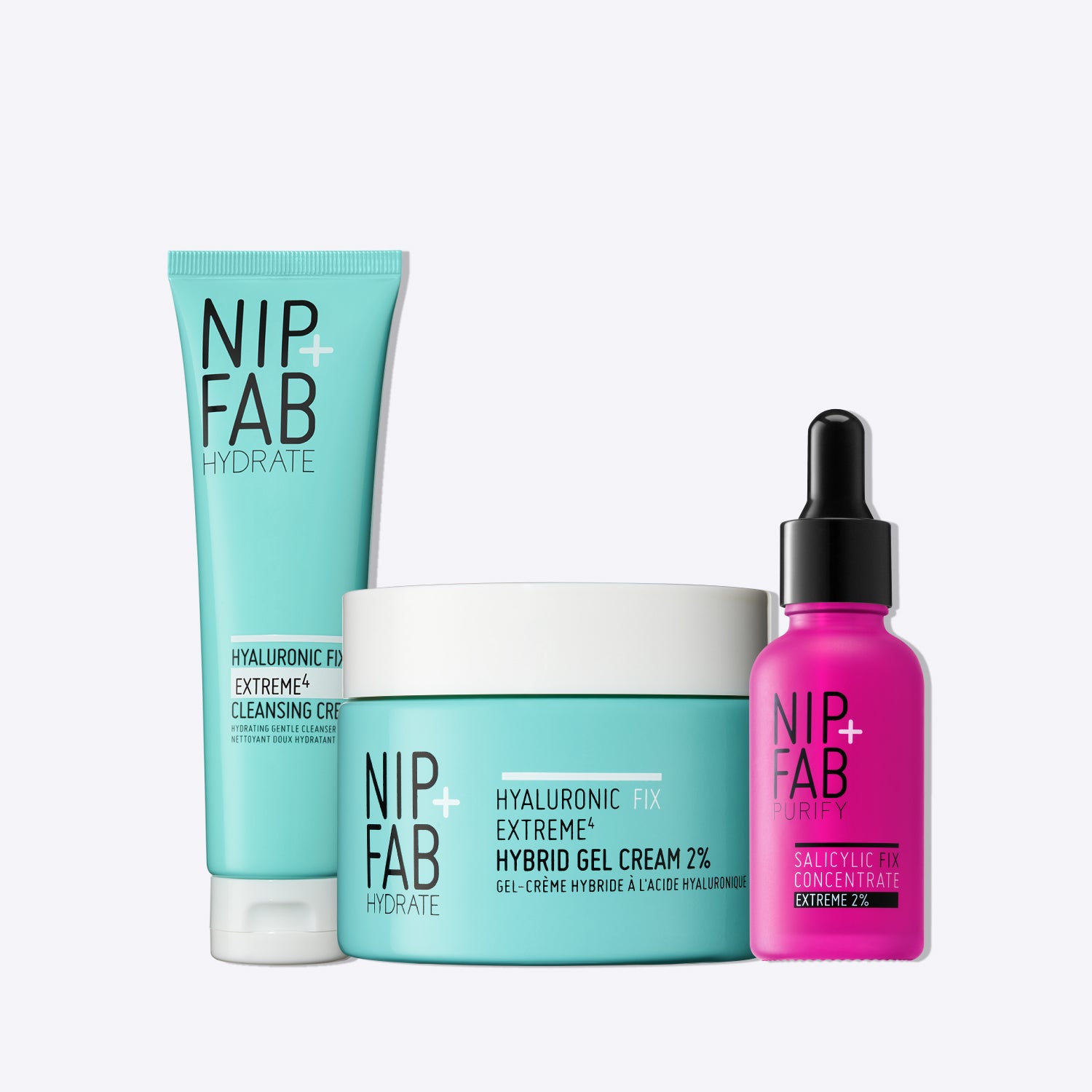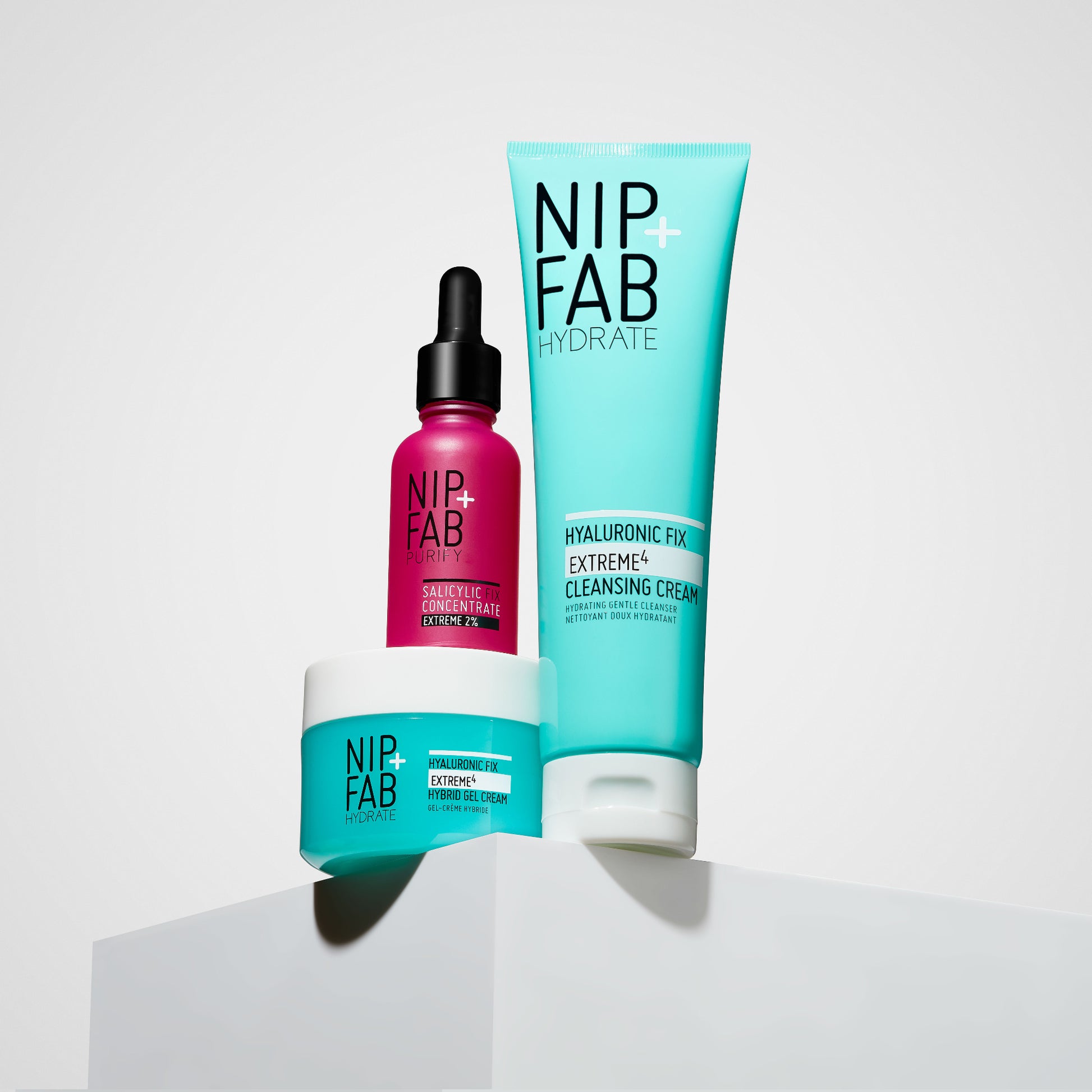


If you speak the language of skincare and beauty even just a little bit, the chances are you’ve heard of actives. Sometimes referred to as an ‘active step’, we’re told we should be using them as they help to target a whole host of skin concerns, but what exactly are they? Here, we explain what actives are and how to start using them in your routine via three simple steps – find them below.
What are actives?
In simple terms, actives are the ingredients in a product that address whatever skin concern that product is meant to target. So ingredients like glycolic acid, salicylic acid, niacinamide, vitamin C, retinol, hyaluronic acid and so on are all actives. That means that if you’re buying a product that claims to treat blemishes and breakouts, the active ingredient will be what actually treats the concern – in this case, salicylic acid. Most products contain an active ingredient at some level, and in most regions, the active will have to have been lab-proven to treat the specified concern. You can check out what active ingredients are in a product by checking the ingredients list – it’s a legal requirement to list them by their INCI (pronounced ‘inky’) name, which makes it easy to check what exactly is in a product.
How to use actives into your routine
If you’ve never used actives before, it can be overwhelming choosing the right one for you, due to the sheer amount of choice on the market. You need to think about your skin type and the primary skin concern you want to target (is your skin blemish-prone? Dry? Congested? Do you have any discolouration, ie. pigmentation?) and seek an active that addresses that concern. If you’re not sure what your skin concern is, take our three-minute Routine Builder here for suggestions on which active is for you.
Some actives are more potent than others – take retinol, salicylic acid and glycolic acid for example – so require the ‘slow and low’ approach more than others like hyaluronic acid or niacinamide. Essentially, this means introducing them gradually, and in small amounts to begin with. With these more potent actives, it’s a good idea to start using them around twice a week, while keeping a close eye on how skin reacts. If it’s starting to look dry, or flake, or if it stings when you use the product, reduce your usage right down to once a week, or take a break and let skin recover, then start again.
If your skin tolerates the product well, you’re in a good position to up your dosage. Remember, slow and low is best, so up them to 2-3 times a week and see how skin reacts. If there’s no irritation, carry on, if it starts to react, reduce the frequency or take a break.
The last – and arguably most crucial – step when it comes to introducing actives is to lock in their benefits with hydration. When we say hydration, we mean products that primarily contain hyaluronic acid, polyglutamic acid, vitamin E, squalene and so on. Hydrating skin after your active step not only helps to lock in all the benefits of the chosen active, but also helps to minimise any chance of irritation by ensuring that your skin barrier has enough moisture to keep it healthy.
A hydrating, nourishing concentrate is a good place to start when choosing your hydration step, as they are generally lightweight in texture, which makes them good for layering over and under other products. Alternatively, a serum – usually a bit thicker in texture – can be used: depending on your skin type (for example, if you’re oily), you may even be able to get away without moisturiser afterwards.
For even more hydration, you can even hydrate skin at the start of your routine with a cleanser. This creates a calm, soothed base for your actives and forms the base of what we like to call a ‘moisture sandwich’ routine – hydration + active + hydration. This method is a great way to introduce actives if you’re new to them – shop our moisture sandwich kits here.